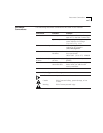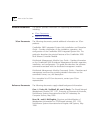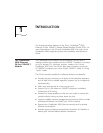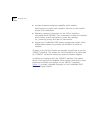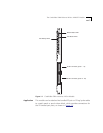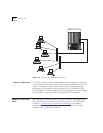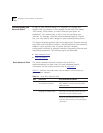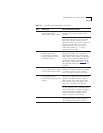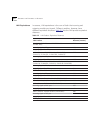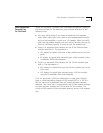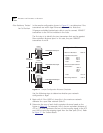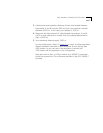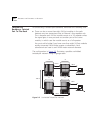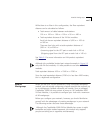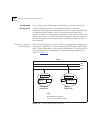
Understanding the General Rules 2-3
3 The maximum Fiber Ethernet
network diameter is
4200 meters of fiber cable.
The 4200 meters is the maximum distance
between any two transceivers on the
network.
The 4200 meters does not include the
transceiver cable (that is, drop or patch
cable) that connects a device with an
external transceiver. Transceiver cables can
extend up to 50 meters. Thus, total
network diameter can be as much as
4300 meters (4200 m + 2 * 50 m)
between any two nodes.
4 Certain LAN devices on the
network shrink the
maximum Fiber Ethernet
network diameter to less
than 4200 meters.
Many LAN products delay the signal that
goes through them. This is known as
equivalent distance. Every microsecond
delay reduces the maximum link distance.
In fact, every microsecond delay shrinks
the network diameter by approximately
200 meters of fiber cable. Table 2-2
lists
the Equivalent Distances for other 3Com
products.
5 Assume that one meter of
coax or twisted pair is equal
to one meter of fiber cable.
This is a conservative rule of thumb. For
example, the actual equivalence is about
1.1 meters of coax for every meter of
fiber. For simplicity, assume one meter.
6 The fiber link distances must
not exceed the limits
imposed by the optical power
budget.
In general, on 62.5 micron cable, you
can go up to 4000 meters point-to-point
using the CoreBuilder 5000 or ONline
fiber modules. If you have poor quality
cable or cross many patch panels, you
may have to sacrifice some distance.
Some older Ethernet fiber optic products
are less powerful than CoreBuilder 5000
fiber module optics. So when connecting
to these products, remember that the
least powerful device determines the
maximum point-to-point distance.
7 When in doubt, use a bridge. If you are not certain if you have
exceeded allowable network distances,
use a bridge to extend the network.
Table 2-1 Seven Basic Network Rules (continued)
Rule Definition Recommendations/Notes



